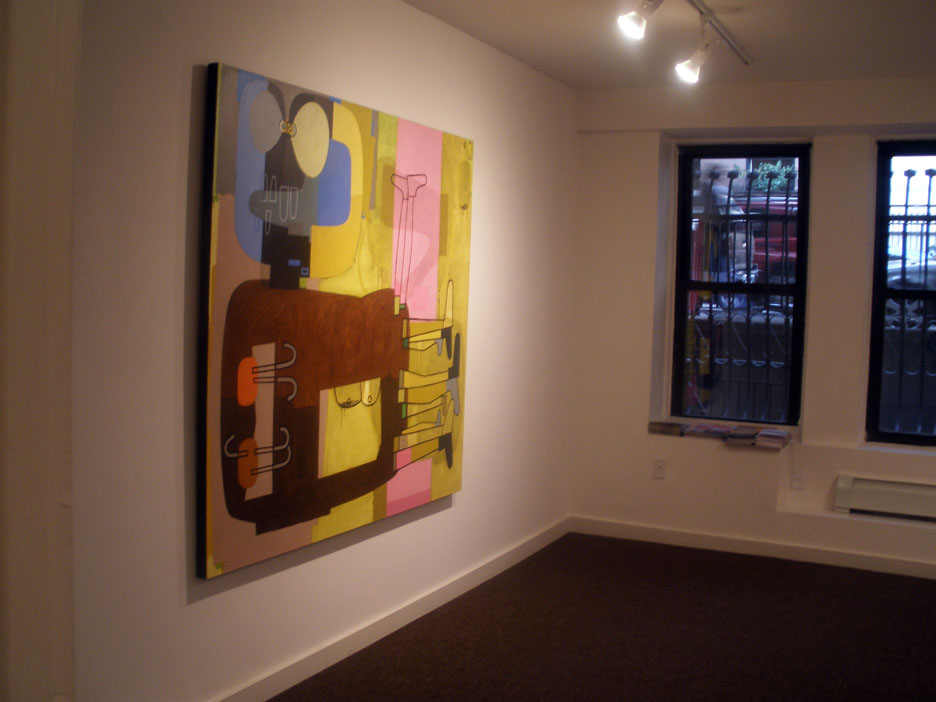David Storey Explores a Universe of Color
June 5, 2011

Published: November 20, 2008
Walking through the Upper East Side, it may be very difficult to find the Lesley Heller Gallery, with its steps that drop below the sidewalk surface, its brownstone exterior that blends in with the neighborhood architecture and only a small welcoming sign dictating the name of the gallery. However, if you stroll through the Visual Arts complex at Fordham College at Lincoln Center (FCLC), you may have an easier time finding the artist behind this gallery’s current exhibit, David Storey, teaching one of his drawing classes. Storey is an assistant professor here at FCLC, as well as exhibiting gallery artist. After graduating with an MFA in 1972 from the University of California, Davis, Storey has since been featured in over 50 exhibitions, museum collections and publications. His current exhibit at the Lesley Heller Gallery runs until Dec. 6 and features paintings that he says “achieve equilibrium between color, image and language of purely abstract elements.” The Observer sat down with Storey to find out about his new exhibit, what it achieves and how it fits into his long line of accomplishments.
Observer: How did you get into art? Was it something that came out as a kid or something that came as you grew and matured?
David Storey: When I was a kid, I was aware of art because my father taught art at various colleges. I got very seriously into photography in high school, and once I was away at college, I just did it. It was the greatest education—to look at the world through the frame of a camera. I guess I didn’t have a choice. It was just what I was going to do.
Observer: Why have you picked the particular media you work in (painting and drawing)?
DS: The great thing about paint is color. You have any color imaginable—a universe of color. It’s sensuous, provocative and subjective. I make paintings for about a year, and then I stop for about a month and make drawings. They’re related, but they have nothing to do with the painting. I make drawings that are complete in and of themselves. They’re simpler. With drawing, it’s about eliminating everything from my vision except one idea—concentrating on one thing. Then when I go to painting, it’s like opening the curtain. You can have complexities, subtleties and depth.
Observer: What classes are you teaching now?
DS: Drawing 2, Visual Thinking and Drawing 1.
Observer: Do you notice any correlation between what you do outside of school and in the classroom?
DS: What I’ve always tried to bring to the classroom from my own work is the enthusiasm. These days in contemporary visual art, what people are doing is so diverse. My goal is not to emphasize technical process, but to get my enthusiasm across. You don’t have to graduate before you make a work of art. I want to get across some idea of excitement of discovering that voice.
Observer: With the work in your current exhibit, why did you choose to create some pieces that were black-and-white along with others that were colorful?
DS: Every once in a while, I focus on an image in a painting, and as it emerges, color seems to play a less and less central role. These two paintings are probably as close as my painting gets to resembling a drawing, but in the end, the grays and muted colors matter quite a lot. Also, the images in these two paintings are straightforward and iconic, more singular and as such, I think they lend themselves to a more graphic “world.”
Observer: I noticed you have an interesting way of showing the human body. Rather than show it as a whole, you seem to show it as more of a collection of pieces. Why have you chosen to create bodies like this, and what are you trying to say?
DS: In a representation, an image, you can editorialize, isolate and emphasize. If a figure is presented as engaged in an intellectual, reflective condition, it might be all head. Likewise, an action figure could be a collection of legs and arms minus a head or torso. Many figures are intended as witnesses or spectators and as such will have the eyes and attitude of the watchful.
Observer: I also noticed a lot of feet in your pieces. Is there a particular reason for this?
DS: If you intend to animate or personify any shape or element in a painting, the obvious method is to put a face, or face-like configuration, in the blend. I prefer the personification that occurs with the addition of limbs because it frequently conjures up associations with the mechanical. I’m enough of a child of the 20th century to have a fondness for the machine as metaphor; it’s so pre-digital.
Observer: With your recent exhibit, what has been your great accomplishment?
DS: With my drawings and paintings, I’ve been working on similar ideas for about 20 years. I’m very happy with the direction I’m going in. This show is the clearest manifestation of these ideas I’ve been working on for so many years. It’s becoming more sharply defined and eloquent. My voice is getting better at saying the things I want it to say.
Observer: Is there something you would like to share with an aspiring artist—a lesson or some words of encouragement?
DS: There’s something I always tell people: If this is something you want to do, don’t give up. What matters more than anything else is that if you have the passion to do something, keep doing it. Success comes to the people who don’t go away.












